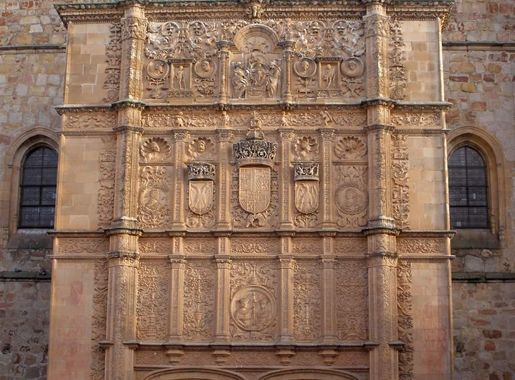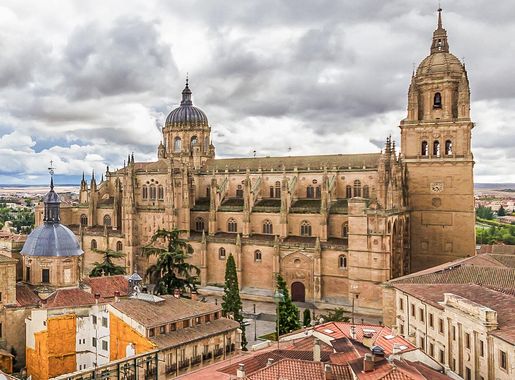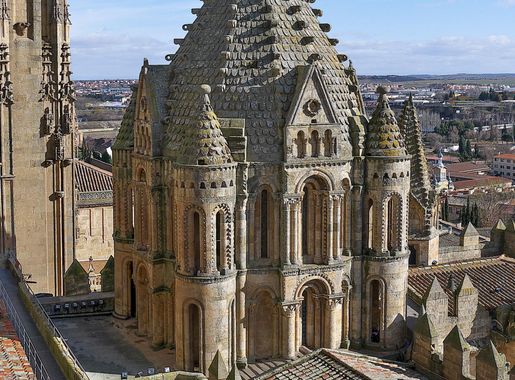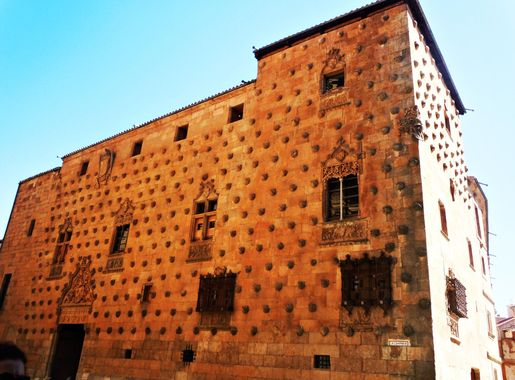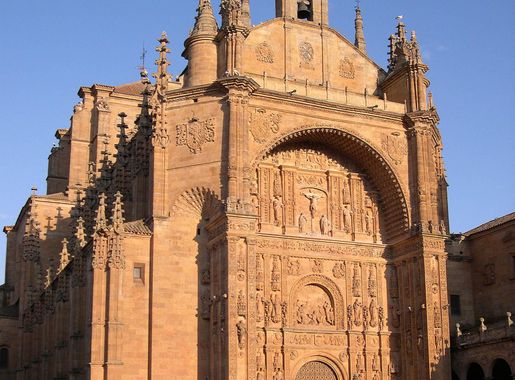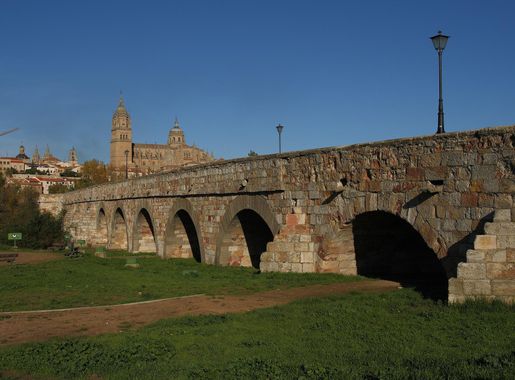
Casco Antiguo: The Heartbeat of Historic Salamanca
Discover the charm of Casco Antiguo, Salamanca's historical heart, where stunning architecture, rich history, and vibrant culture come together.
Casco Antiguo, the Old Town of Salamanca, is a mesmerizing blend of rich history, stunning architecture, and vibrant culture. As you stroll through its narrow, winding streets, you'll be transported back in time. This neighborhood is home to some of the city's most iconic landmarks, including the majestic Salamanca Cathedral and the University of Salamanca, one of the oldest universities in Europe. The Plaza Mayor, often considered one of the most beautiful squares in Spain, is the perfect place to start your exploration. Here, you can relax at one of the many charming cafes and soak in the lively atmosphere. The square is particularly enchanting at night when it is beautifully illuminated, creating a magical ambiance. Casco Antiguo is also a haven for food lovers. The neighborhood boasts numerous tapas bars and traditional Spanish restaurants where you can savor local delicacies. Don't miss out on trying the famous 'hornazo,' a savory pastry filled with meat, or the delicious 'jamón ibérico.' For a sweet treat, visit one of the local bakeries and try 'tarta de almendra,' a delightful almond cake. Art enthusiasts will find plenty to admire in Casco Antiguo. The area is dotted with museums and galleries showcasing everything from medieval artifacts to contemporary art. The Casa de las Conchas, with its distinctive shell-covered facade, is a must-visit. Inside, you'll find a public library and temporary exhibitions that provide a deeper insight into Salamanca's rich cultural heritage. Whether you're a history buff, a foodie, or an art lover, Casco Antiguo offers something for everyone. Its unique blend of historical charm and modern vibrancy makes it a must-visit destination in Salamanca.
Local tips in Casco Antiguo
- Wear comfortable shoes; the cobblestone streets can be uneven.
- Visit the Plaza Mayor at night for a magical illumination experience.
- Try the local delicacies like hornazo and tarta de almendra.
- Check out Casa de las Conchas for unique architecture and art exhibitions.
- Take a guided tour to learn about the rich history and hidden gems of the neighborhood.
Casco Antiguo: The Heartbeat of Historic Salamanca
Casco Antiguo, the Old Town of Salamanca, is a mesmerizing blend of rich history, stunning architecture, and vibrant culture. As you stroll through its narrow, winding streets, you'll be transported back in time. This neighborhood is home to some of the city's most iconic landmarks, including the majestic Salamanca Cathedral and the University of Salamanca, one of the oldest universities in Europe. The Plaza Mayor, often considered one of the most beautiful squares in Spain, is the perfect place to start your exploration. Here, you can relax at one of the many charming cafes and soak in the lively atmosphere. The square is particularly enchanting at night when it is beautifully illuminated, creating a magical ambiance. Casco Antiguo is also a haven for food lovers. The neighborhood boasts numerous tapas bars and traditional Spanish restaurants where you can savor local delicacies. Don't miss out on trying the famous 'hornazo,' a savory pastry filled with meat, or the delicious 'jamón ibérico.' For a sweet treat, visit one of the local bakeries and try 'tarta de almendra,' a delightful almond cake. Art enthusiasts will find plenty to admire in Casco Antiguo. The area is dotted with museums and galleries showcasing everything from medieval artifacts to contemporary art. The Casa de las Conchas, with its distinctive shell-covered facade, is a must-visit. Inside, you'll find a public library and temporary exhibitions that provide a deeper insight into Salamanca's rich cultural heritage. Whether you're a history buff, a foodie, or an art lover, Casco Antiguo offers something for everyone. Its unique blend of historical charm and modern vibrancy makes it a must-visit destination in Salamanca.
Iconic landmarks you can’t miss
Casa de las Conchas
Discover the architectural beauty of Casa de las Conchas in Salamanca, a historical site that merges culture, literature, and stunning design.

Palacio de la Salina
Explore the architectural beauty and rich history of Palacio de la Salina, a must-visit tourist attraction in Salamanca, Spain.
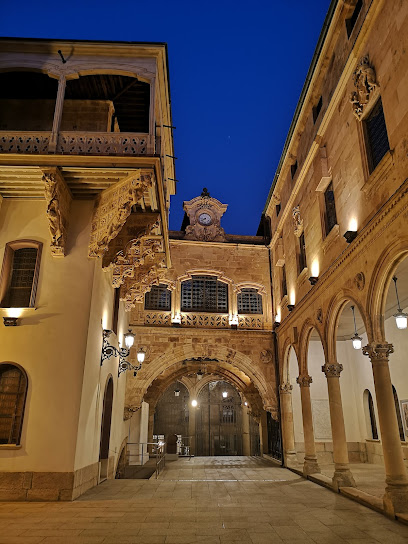
Torre del Clavero
Explore the historical charm of Torre del Clavero, a Gothic gem in Salamanca, Spain, blending rich history with stunning architecture.
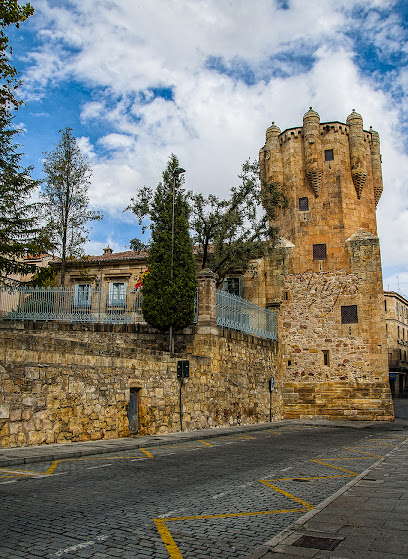
Monumenta Salamanticae (Iglesia de San Millán)
Discover Salamanca's rich history at Monumenta Salamanticae, a local history museum within the beautiful Iglesia de San Millán, perfect for culture enthusiasts.
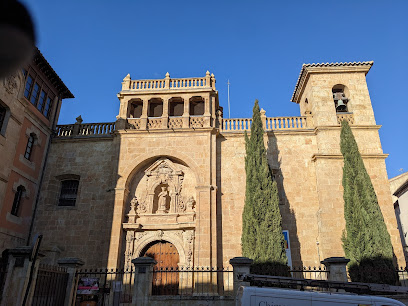
Episcopal Palace (History Museum Salamanca)
Uncover the ecclesiastical treasures of Salamanca at the Episcopal Palace, a historical museum showcasing the city's rich religious heritage.
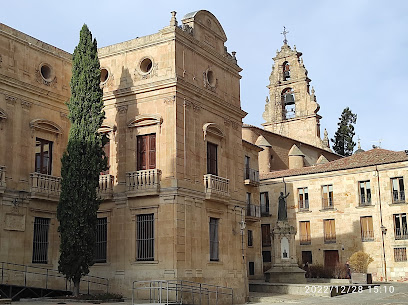
Casco Histórico de Salamanca
Explore Salamanca's Historic Center: A UNESCO World Heritage site filled with stunning architecture, rich history, and vibrant culture.
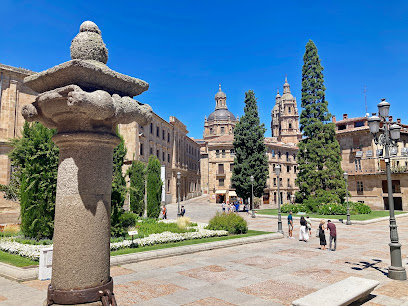
Monument to Miguel de Unamuno
Explore the Monument to Miguel de Unamuno in Salamanca, a tribute to Spain's literary genius amidst vibrant local culture and stunning architecture.
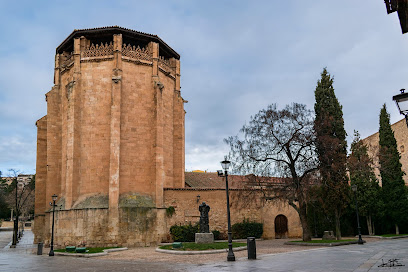
Palacio de los Fermoselle
Explore the rich history and stunning architecture of Palacio de los Fermoselle, a must-visit attraction in the heart of Salamanca, Spain.
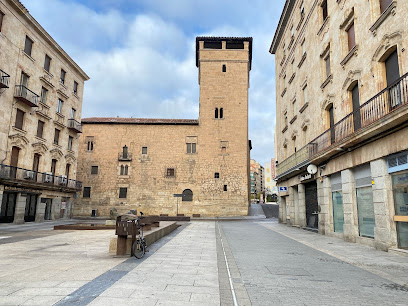
Esculturas y monumentos de Salamanca
Explore the artistic treasures of Salamanca, where historical sculptures and monuments offer a glimpse into the city's rich cultural heritage and architectural splendor.
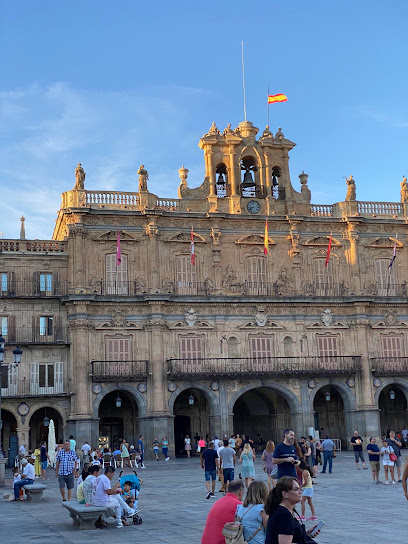
Casa de las Viejas
Explore Casa de las Viejas, a historical gem in Salamanca, where rich architecture meets captivating stories of the past.
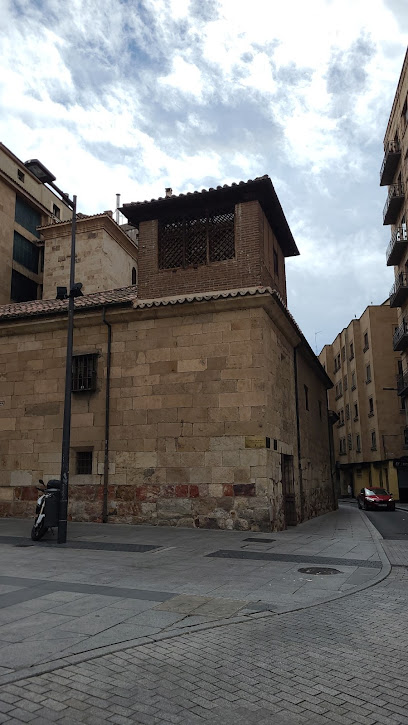
Unmissable attractions to see
Casco Histórico de Salamanca
Discover the stunning architecture and vibrant culture of Casco Histórico de Salamanca, a historical landmark that reflects the rich heritage of Spain.
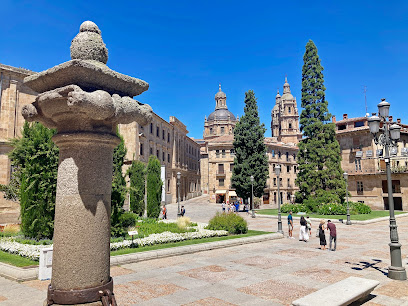
Esculturas y monumentos de Salamanca
Explore the rich history of Salamanca through its stunning sculptures and monuments, each telling a story of art, culture, and heritage.
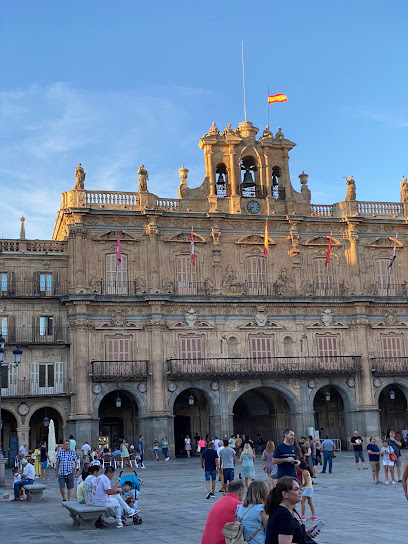
Essential places to dine
RESTAURANTE LA HOJA 21
Experience authentic Mediterranean cuisine at Restaurante La Hoja 21 in Salamanca – where flavors meet tradition in every delightful bite.
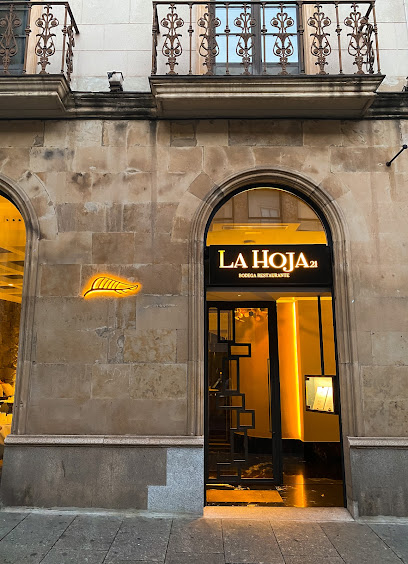
Restaurante El Mesón de Gonzalo
Experience authentic Mediterranean and Spanish flavors at Restaurante El Mesón de Gonzalo in the heart of Salamanca.
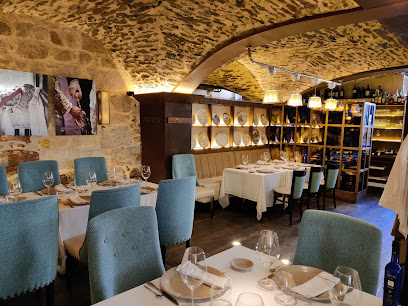
El Bardo Centro
Discover authentic Spanish and Mediterranean flavors at El Bardo Centro in Salamanca – where tradition meets taste.
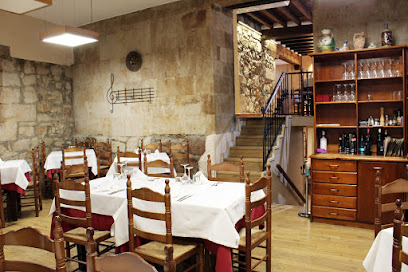
Restaurante Las Tapas de Gonzalo
Experience authentic Spanish cuisine at Restaurante Las Tapas de Gonzalo in Salamanca - where every bite tells a story.

Oroviejo
Discover Oroviejo in Salamanca: A culinary haven offering exquisite Castilian cuisine and modern European dishes in an elegant setting.
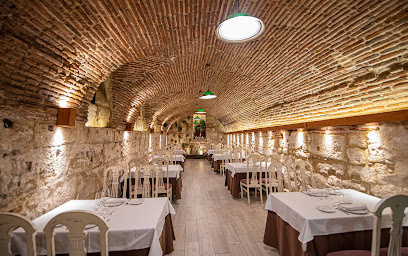
Zazu Bistro
Discover Zazu Bistro in Salamanca for an unforgettable dining experience featuring exquisite French and Mediterranean cuisine.
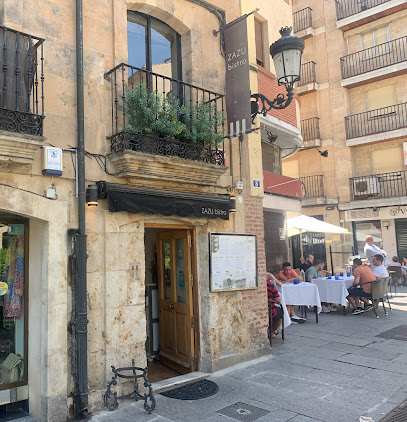
Restaurante En la Parra, SALAMANCA
Experience exquisite Mediterranean and Spanish cuisine at Restaurante En la Parra in Salamanca—where culinary artistry meets elegant dining.
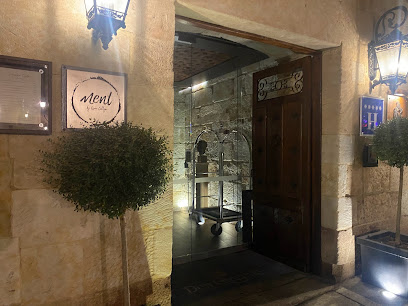
La Casa De Las Pulgas
Experience authentic Spanish flavors at La Casa De Las Pulgas in Salamanca—your destination for delicious tapas and grilled delights.
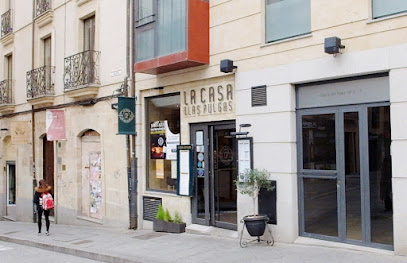
El Pecado Restaurante
Discover El Pecado Restaurante in Salamanca - where traditional Spanish cuisine meets modern flair in a cozy setting.
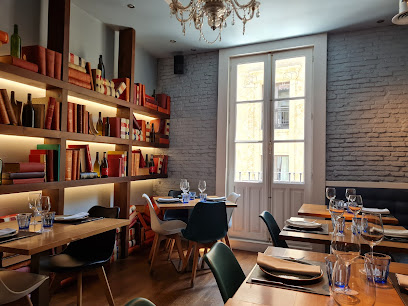
Restaurante El Monje
Discover authentic Castilian flavors at Restaurante El Monje in Salamanca, where history meets culinary excellence for an unforgettable dining experience.
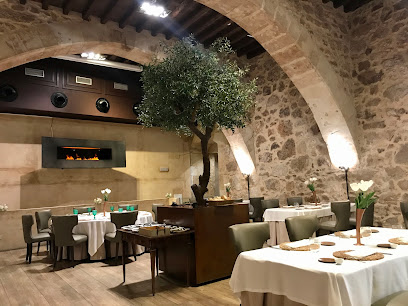
Markets, malls and hidden boutiques
Metro Salamanca
Discover the latest fashion trends and styles at Metro Salamanca, a premier clothing store in Salamanca, Spain, perfect for every fashion enthusiast.
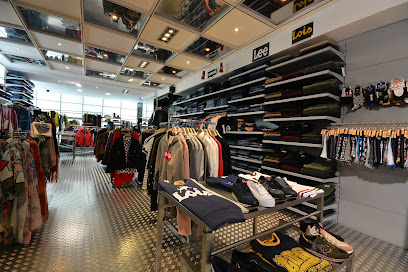
Casco Histórico de Salamanca
Discover the enchanting allure of Casco Histórico de Salamanca, a UNESCO World Heritage site filled with stunning architecture and rich cultural heritage.
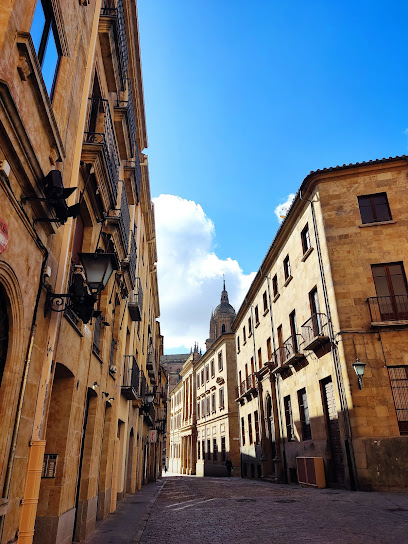
Tiendas EME
Explore the enchanting world of antiques at Tiendas EME in Salamanca, where every item has a story waiting to be discovered.
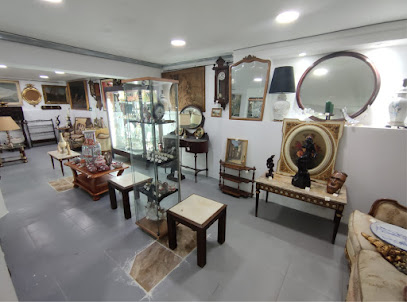
Patio Chico Regalos
Explore Salamanca's charm at Patio Chico Regalos, where unique gifts and local treasures await every curious traveler.
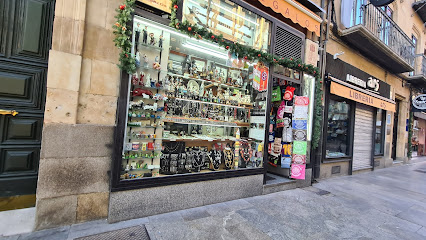
Mercatus
Explore Mercatus, Salamanca's premier gift shop for unique treasures and local crafts that capture the spirit of the city.
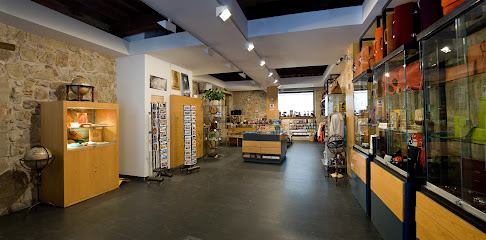
Regalos Artesanales de... Salamanca
Discover unique artisan gifts at Regalos Artesanales in Salamanca, where every piece reflects the rich cultural heritage of this historic city.
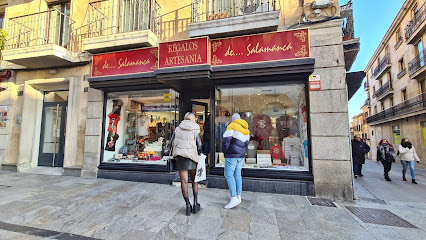
Txauen Salamanca
Discover unique fashion pieces at Txauen Salamanca, blending local cultural heritage with modern trends for an unforgettable shopping experience.
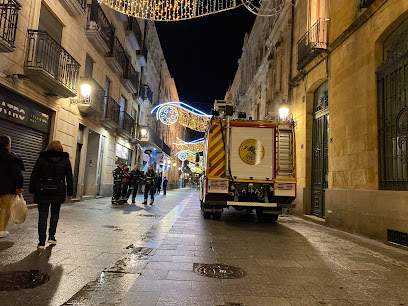
BOUTIQUE CONCHA CEBALLOS
Explore the artistic charm of Salamanca at Boutique Concha Ceballos, where every unique piece tells a story.
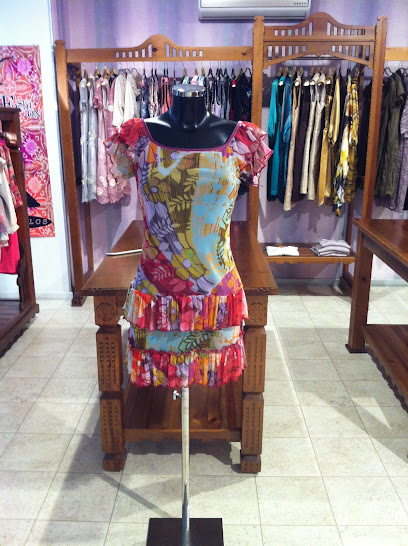
Luis Méndez Craftsmen
Explore the exquisite craftsmanship of jewelry and art at Luis Méndez Craftsmen in Salamanca, where tradition meets creativity in every unique piece.
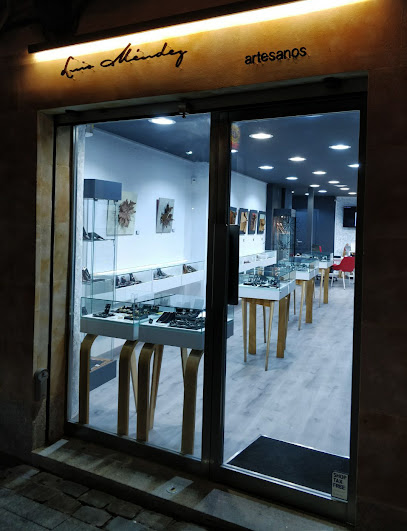
Gloria Galende
Discover chic and contemporary women's fashion at Gloria Galende in Salamanca, where style meets elegance for every occasion.
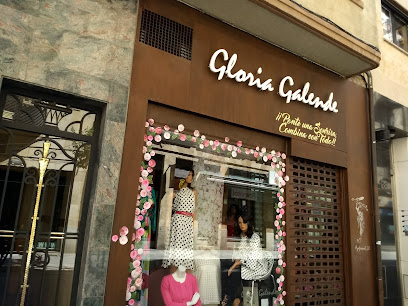
Essential bars & hidden hideouts
The Irish Theatre
Discover the vibrant ambiance of The Irish Theatre in Salamanca, where traditional Irish hospitality meets live music and delicious cuisine.
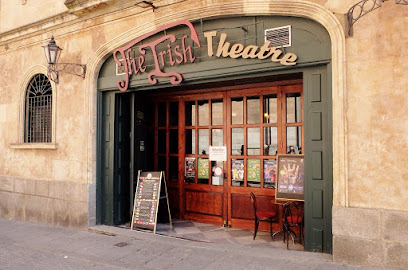
St. Patrick's Irish Pub
Discover the delightful fusion of Irish and German culture at St. Patrick's Irish Pub in Salamanca, where great food and drinks await.
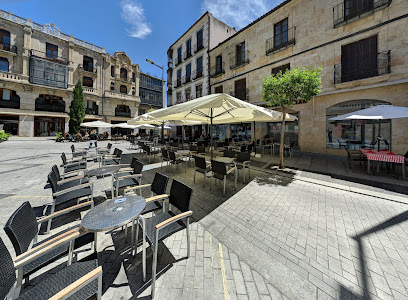
O'HARA'S IRISH PUB
Discover the vibrant atmosphere of O'Hara's Irish Pub in Salamanca, where authentic Irish cuisine and lively entertainment create unforgettable memories.
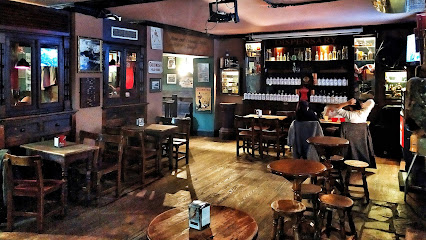
Niebla Cocktail Bar
Discover the vibrant Niebla Cocktail Bar in Salamanca, where exquisite cocktails meet live jazz and a lively atmosphere for unforgettable nights.
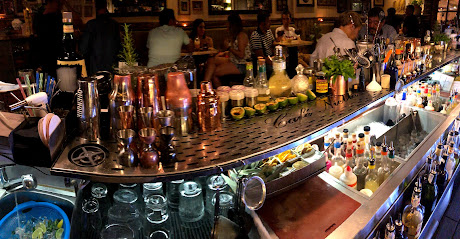
The doctor coctail
Experience the vibrant nightlife of Salamanca at The Doctor Cocktail, where innovative cocktails and a lively atmosphere await.
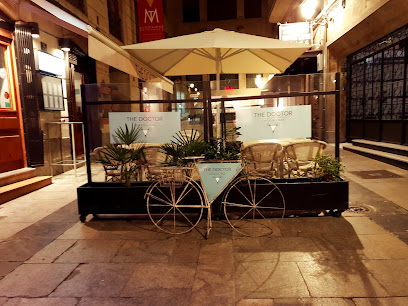
Pub La Perla Negra Irish Club - Salamanca
Discover the lively Irish spirit at Pub La Perla Negra, a vibrant hub for food, drinks, and entertainment in the heart of Salamanca.

Gatsby - Salamanca
Discover Gatsby in Salamanca: where lively nights, delicious tapas, and great drinks come together for an unforgettable experience.
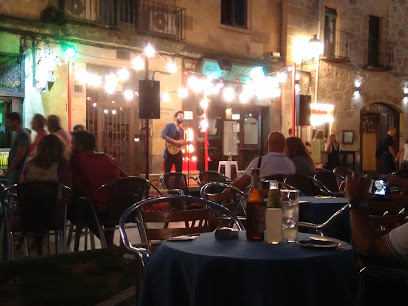
Vintage Cocktail Bar
Discover the Vintage Cocktail Bar in Salamanca, where classic cocktails meet a charming atmosphere in a historical Spanish setting.
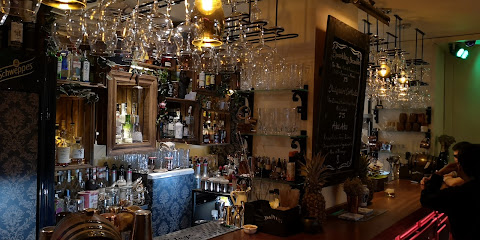
Grand Hotel Premium Champagne Bar
Unwind in luxury at the Grand Hotel Premium Champagne Bar, a sophisticated cocktail bar in Salamanca offering exquisite drinks and an elegant atmosphere.
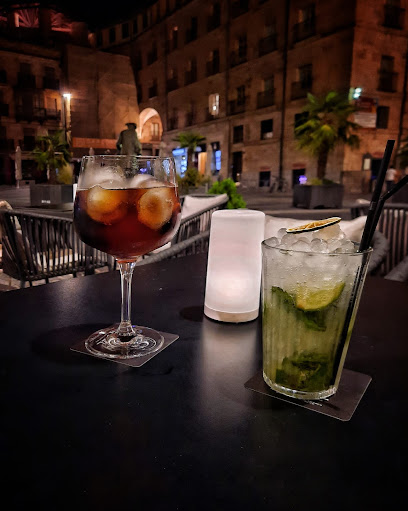
El Otro Lado
Experience the vibrant nightlife of Salamanca at El Otro Lado, where live piano music meets a cozy bar atmosphere.
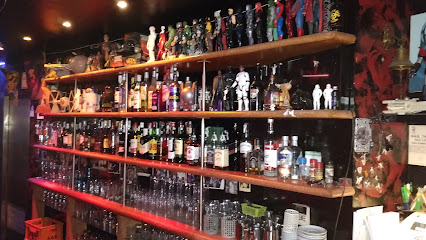
Local Phrases
-
- HelloHola
[Oh-la] - GoodbyeAdiós
[Ah-dee-ohs] - YesSí
[See] - NoNo
[Noh] - Please/You're welcomePor favor/De nada
[Por fah-vor/Deh nah-dah] - Thank youGracias
[Grah-see-ahs] - Excuse me/SorryPerdón/Lo siento
[Pair-dohn/Loh see-en-toh] - How are you?¿Cómo estás?
[Koh-moh es-tahs] - Fine. And you?Bien. ¿Y tú?
[Byen. Ee too] - Do you speak English?¿Hablas inglés?
[Ah-blahs een-glays] - I don't understandNo entiendo
[Noh en-tee-en-doh]
- HelloHola
-
- I'd like to see the menu, pleaseMe gustaría ver la carta, por favor
[May goo-stah-ree-ah ver lah kar-tah, por fah-vor] - I don't eat meatNo como carne
[Noh koh-moh kar-neh] - Cheers!¡Salud!
[Sah-lood] - I would like to pay, pleaseMe gustaría pagar, por favor
[May goo-stah-ree-ah pah-gar, por fah-vor]
- I'd like to see the menu, pleaseMe gustaría ver la carta, por favor
-
- Help!¡Ayuda!
[Ah-yoo-dah] - Go away!¡Vete!
[Veh-teh] - Call the Police!¡Llama a la Policía!
[Yah-mah ah lah Po-lee-thee-ah] - Call a doctor!¡Llama a un médico!
[Yah-mah ah oon meh-dee-koh] - I'm lostEstoy perdido/a
[Es-toy pair-dee-doh/ah] - I'm illEstoy enfermo/a
[Es-toy en-fehr-moh/ah]
- Help!¡Ayuda!
-
- I'd like to buy...Me gustaría comprar...
[May goo-stah-ree-ah kohm-prar] - I'm just lookingSolo estoy mirando
[So-loh es-toy mee-ran-doh] - How much is it?¿Cuánto cuesta?
[Kwan-to kwe-stah] - That's too expensiveEsto es demasiado caro
[Es-toh es de-mah-see-ah-doh ka-ro] - Can you lower the price?¿Puedes bajar el precio?
[Pweh-des ba-har el pre-syo]
- I'd like to buy...Me gustaría comprar...
-
- What time is it?¿Qué hora es?
[Keh oh-rah es] - It's one o'clockEs la una
[Es lah oo-nah] - Half past (10)Son las diez y media
[Son lahs dee-ehs ee me-dee-ah] - MorningMañana
[Mah-nya-nah] - AfternoonTarde
[Tahr-deh] - EveningNoche
[Noh-cheh] - YesterdayAyer
[Ah-yehr] - TodayHoy
[Oy] - TomorrowMañana
[Mah-nya-nah] - 1Uno
[Oo-noh] - 2Dos
[Dohs] - 3Tres
[Tres] - 4Cuatro
[Kwah-troh] - 5Cinco
[Theen-koh] - 6Seis
[Sehz] - 7Siete
[Syeh-teh] - 8Ocho
[Oh-choh] - 9Nueve
[Nweh-veh] - 10Diez
[Dee-ehs]
- What time is it?¿Qué hora es?
-
- Where's a/the...?¿Dónde está el/la...?
[Dohn-deh es-tah el/la] - What's the address?¿Cuál es la dirección?
[Kwahl es lah dee-rek-syon] - Can you show me (on the map)?¿Puedes mostrarme (en el mapa)?
[Pweh-des mos-trar-me (en el mah-pah)] - When's the next (bus)?¿Cuándo es el próximo (autobús)?
[Kwan-doh es el proh-ksee-moh (ow-toh-boos)] - A ticket (to ....)Un billete (a ....)
[Oon bee-yeh-teh (ah)]
- Where's a/the...?¿Dónde está el/la...?
History of Casco Antiguo
-
The history of Casco Antiguo in Salamanca is deeply intertwined with its Roman roots, as the city was established as 'Helmantica' during the Roman Empire. This period saw the construction of significant infrastructures, including roads and aqueducts, some remnants of which can still be seen today. The city's strategic position made it a vital hub for trade and military purposes, laying the groundwork for its future development.
-
In the 13th century, Salamanca's Casco Antiguo became the home of one of the oldest universities in the world, the University of Salamanca. Founded in 1134 and officially recognized in 1218, it became a center of learning, attracting scholars from across Europe. The university’s influence shaped the cultural and intellectual landscape of the region, making Salamanca a beacon of knowledge during the Renaissance.
-
The Casco Antiguo is renowned for its stunning architecture, exemplified by the Plateresque style which flourished in the late 15th and early 16th centuries. Notable structures include the Casa de las Conchas, adorned with shell motifs, and the New Cathedral, which combines Gothic and Baroque elements. These buildings reflect the city's wealth and cultural significance during Spain's Golden Age.
-
During the Spanish Civil War (1936-1939), Salamanca served as a bastion for Franco's Nationalist forces. The city witnessed significant military activity, and many of its historical sites were repurposed for war efforts. The impact of the war is still felt today, as it shaped the city's political and social fabric, leading to a period of reconstruction and modernization in the following decades.
-
In recent years, Casco Antiguo has experienced a cultural renaissance, becoming a UNESCO World Heritage site in 1988. This designation has spurred efforts to preserve its historical sites and promote its rich cultural heritage. Festivals, such as the 'Noche de las Velas', attract visitors to experience the city's vibrant atmosphere, showcasing its art, music, and gastronomy, while fostering a renewed appreciation for Salamanca's historical legacy.
Casco Antiguo Essentials
-
Casco Antiguo, the historic heart of Salamanca, is easily accessible from other neighborhoods. If you’re arriving by train, the Salamanca train station is about a 20-minute walk or a short taxi ride from Casco Antiguo. Local buses also connect the station to the area, with several routes running frequently. If you are in the nearby neighborhoods, walking is often the best way to reach Casco Antiguo, as its narrow streets are best explored on foot.
-
Casco Antiguo is primarily a pedestrian zone, making it ideal for walking. Most attractions, including the University of Salamanca, Plaza Mayor, and cathedrals, are within a short walking distance. Public transport options are limited in this area, but local buses operate outside the main tourist spots. Bicycles can be rented from various shops, and there are designated bike lanes in some parts of Salamanca, though they are less common in the old town.
-
Casco Antiguo is generally safe for tourists; however, standard precautions should be taken. Petty crimes, such as pickpocketing, can occur in crowded areas, including Plaza Mayor and near popular attractions. It's advisable to keep your belongings secure and be vigilant in busy places. As a precaution, avoid poorly lit streets at night and be cautious in quieter areas after dark.
-
In case of an emergency, dial 112 for police, fire, or medical assistance in Spain. The nearest hospital is Hospital Universitario de Salamanca, located just a short taxi ride from Casco Antiguo. There are also several pharmacies in the area for minor health issues. It’s recommended to have travel insurance that covers medical emergencies.
-
Fashion: Do dress modestly, particularly when visiting churches. Avoid wearing beachwear or overly casual clothing in sacred spaces. Religion: Do respect local customs; when entering a church, cover your shoulders and knees. Public Transport: Do yield your seat to the elderly or disabled. Don't eat or drink on buses or in public spaces. Greetings: Do greet locals with a friendly 'Hola' and a smile. Eating & Drinking: Do try the local cuisine at tapas bars. Don't refuse food or drink offered to you, as it may be considered rude.
-
To experience Casco Antiguo like a local, visit the local markets, such as Mercado Central, for fresh produce and authentic Spanish delicacies. Engage with the locals at cafes and bars, where you can enjoy traditional tapas. Attend a local festival if your visit coincides with one, as these events provide insight into the culture and traditions of Salamanca. Try to learn a few basic Spanish phrases, as it will enhance your interactions and show respect for the local culture.
Trending Landmarks in Casco Antiguo
Nearby Cities to Casco Antiguo
-
Things To Do in Avila
-
Things To Do in Valladolid
-
Things To Do in Bragança
-
Things To Do in Segovia
-
Things To Do in Chaves
-
Things To Do in Madrid
-
Things To Do in Vila Real
-
Things To Do in Lamego
-
Things To Do in Toledo
-
Things To Do in Burgos
-
Things To Do in Guimarães
-
Things To Do in Braga
-
Things To Do in Coimbra
-
Things To Do in Porto
-
Things To Do in Aveiro


